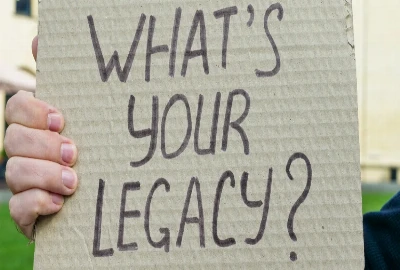The Psychology of Loot Boxes and Microtransactions in Modern Gaming

In recent years, the gaming industry has shifted dramatically from one-time purchases to ongoing revenue models. At the heart of this transformation are loot boxes and microtransactions, two features that have sparked both massive profits and heated controversy. A loot box is a virtual container that rewards players with randomized items—anything from cosmetic skins to powerful in-game gear. Microtransactions, on the other hand, refer to small digital purchases that enhance gameplay or appearance.
These mechanics are not just about fun—they are carefully designed with psychological principles in mind. Game developers use elements of reward systems, scarcity, and anticipation to influence player behavior. For players, this creates a double-edged sword: the thrill of earning something rare can feel exhilarating, but the frustration of endless spending without guarantees can be discouraging.
As debates about ethics, regulation, and player well-being continue, understanding the psychology of loot boxes and microtransactions is crucial. Are they harmless entertainment, clever business models, or digital gambling in disguise? This blog dives deep into how they work, why they’re so addictive, and what their impact means for gamers and the industry at large.
The rise of the digital economy
From Fortnite’s skins to FIFA’s Ultimate Team packs, microtransactions now generate billions annually, often surpassing base game sales.
Why psychology matters
Behind every design choice lies an intent: to capture attention, trigger emotions, and drive engagement.
The bigger debate
Governments and regulators worldwide are considering whether loot boxes should be classified as gambling—making psychology even more central to the discussion.
The Science of Random Rewards

Loot boxes are built around the psychological principle of variable-ratio reinforcement, the same system used in slot machines.
The thrill of unpredictability
Players don’t know when a rare item will appear, which creates excitement and anticipation. Just like pulling a slot lever, opening a loot box provides a rush that keeps players coming back for more.
Dopamine release and brain chemistry
When players finally receive a valuable item, the brain releases dopamine—a neurotransmitter linked to pleasure and reward. Over time, this conditions players to associate opening loot boxes with excitement, even if most outcomes are disappointing.
Parallels to gambling
The randomness and visual cues (flashing lights, celebratory sounds) mimic the mechanics of casinos. For younger audiences, this can create gambling-like behavior patterns before they ever step foot in a casino.
By tapping into these neurological processes, loot boxes blur the line between gaming and gambling, which is why they’ve become a central focus of psychological and ethical debates.
Microtransactions and the Illusion of Choice

While loot boxes rely on randomness, microtransactions offer direct purchasing power. Yet even here, psychology plays a huge role.
Framing purchases
Games often use in-game currency instead of real money to obscure actual costs. Spending “500 gems” feels less impactful than spending $5. This psychological trick makes players more likely to purchase.
Tiered pricing and “anchoring”
Bundles are designed to steer players toward mid-tier options by presenting smaller purchases as insufficient and higher ones as excessive. Anchoring creates the illusion of value, even when all prices are inflated.
Cosmetic vs. functional items
While many microtransactions are cosmetic, some provide competitive advantages. This creates pressure for players to spend, especially in multiplayer games where looking “basic” or falling behind can feel like social or performance failure.
By structuring purchases around psychology, microtransactions create a sense of agency while subtly nudging players toward consistent spending.
The Role of FOMO and Scarcity

Another psychological tool at play is scarcity marketing, often amplified through the fear of missing out (FOMO).
Limited-time offers
Games frequently introduce time-limited skins, events, or loot boxes. Players feel compelled to act immediately, fearing the chance won’t return.
Seasonal rewards
Battle passes, like those in Fortnite or Call of Duty, reward consistent spending and playtime throughout a season. Missing even one step creates anxiety about incomplete collections.
Social comparison and pressure
When friends or influencers showcase rare items, players feel left out if they don’t have the same. This taps into deep social instincts about belonging and status.
Scarcity and FOMO are powerful motivators, pushing players toward purchases they might not otherwise consider.
Impact on Players: Enjoyment vs. Exploitation

While loot boxes and microtransactions add revenue for developers, their effects on players are mixed.
Enhancing player engagement
Some argue these mechanics add excitement and customization, giving players freedom to shape their gaming experience. Skins and collectibles can also create a sense of community identity.
Risks of overspending
For others, especially younger players, the psychological triggers can lead to excessive spending. Cases of children racking up huge credit card bills highlight the darker side of these practices.
Emotional highs and lows
The rollercoaster of winning and losing creates emotional swings that can mimic addictive behaviors. While some players manage this balance well, others experience frustration, regret, and even financial stress.
The challenge lies in distinguishing between harmless fun and exploitative mechanics.
The Industry Perspective: Profits and Controversies

From a business standpoint, loot boxes and microtransactions are highly lucrative. But they also bring controversy.
The economics of free-to-play
Many games are free to download, relying entirely on microtransactions to generate revenue. This model lowers the barrier to entry while ensuring steady income streams.
Backlash and boycotts
Gamers have pushed back against exploitative practices. The uproar around Star Wars Battlefront II in 2017 forced EA to rework its loot box system after accusations of “pay-to-win” mechanics.
Regulation and global debates
Some countries, like Belgium and the Netherlands, have banned loot boxes outright, citing their similarity to gambling. Others continue to investigate the issue, suggesting stricter regulations may be on the horizon.
The industry now faces the challenge of balancing profits with ethical responsibility.
Strategies for Players: How to Avoid the Trap

While loot boxes and microtransactions aren’t going away anytime soon, players can adopt strategies to stay in control.
Set spending limits
Treat in-game purchases like entertainment expenses. Decide on a budget before playing and stick to it.
Be mindful of emotional triggers
Recognize when FOMO or frustration is driving your decisions. If a purchase feels impulsive, take a step back before committing.
Explore alternative rewards
Some games allow players to earn skins or items through gameplay rather than purchases. Taking advantage of these systems can help avoid overspending.
By approaching gaming with awareness, players can enjoy the benefits of personalization and excitement without falling into exploitative cycles.




